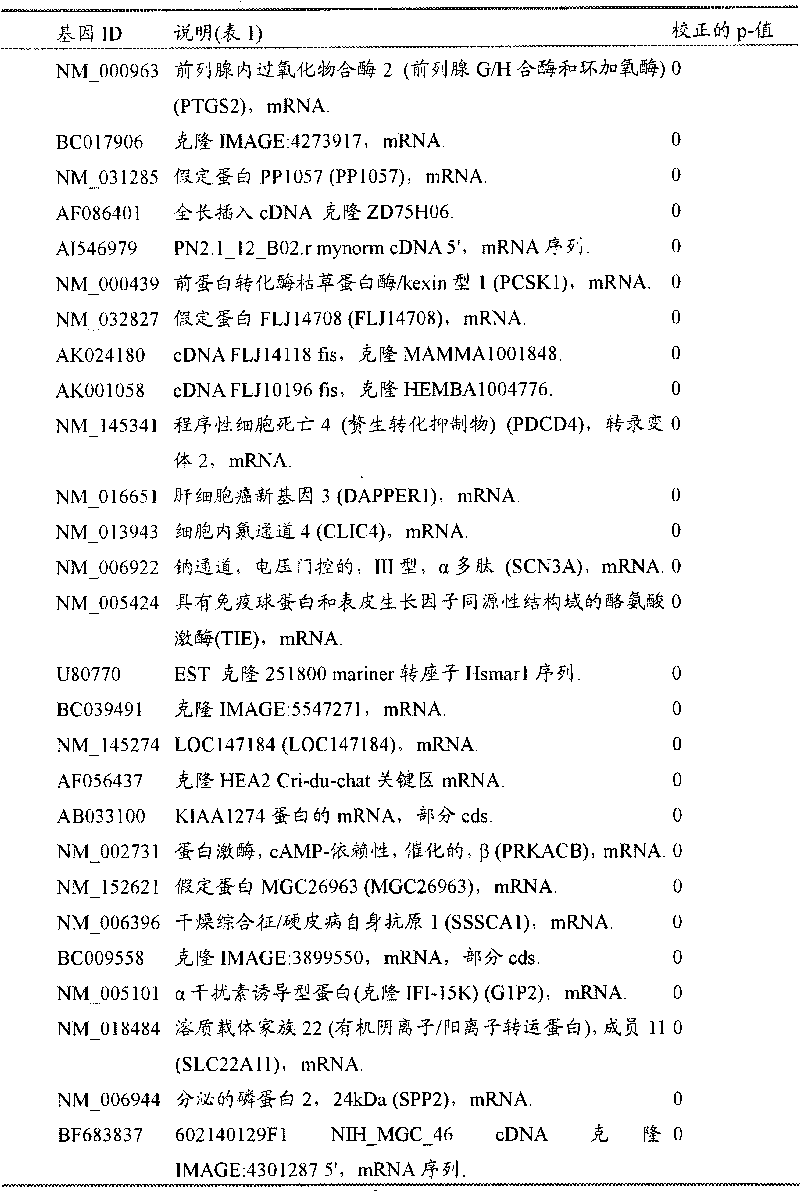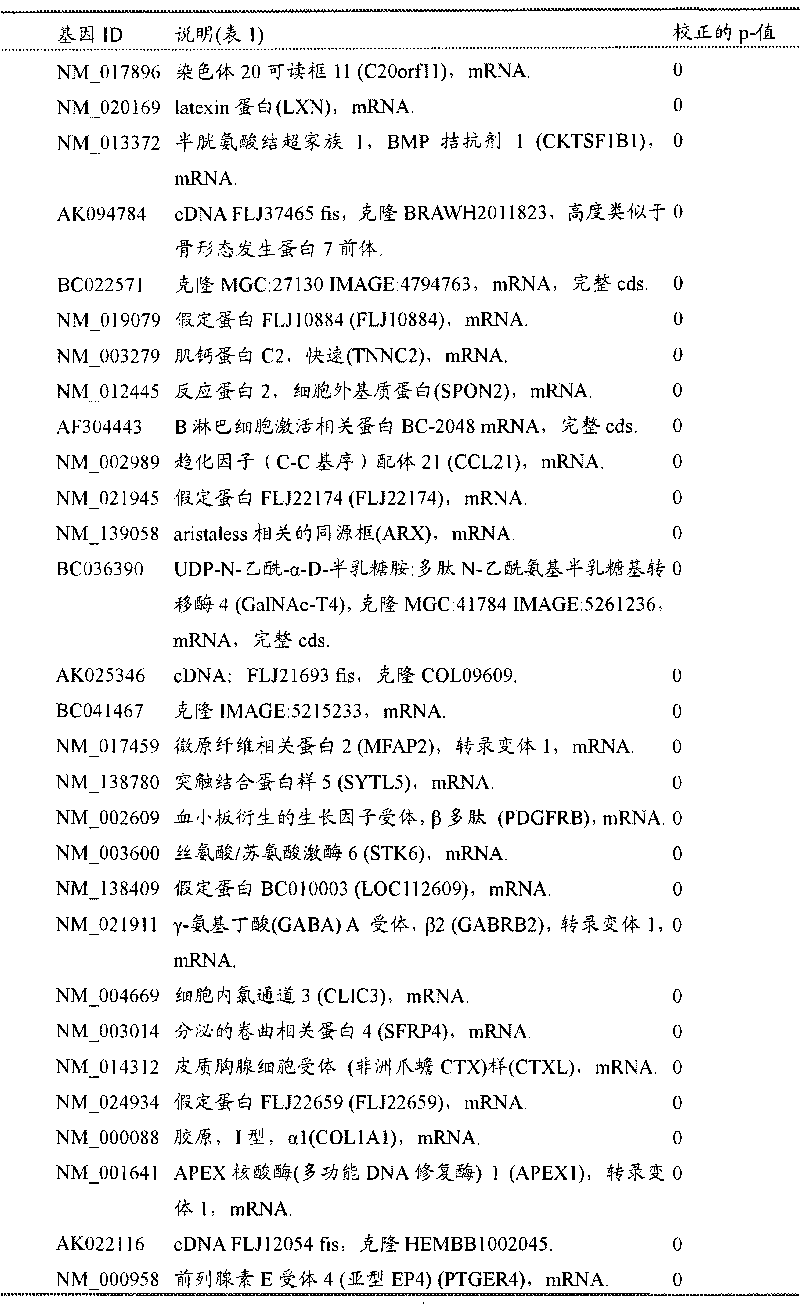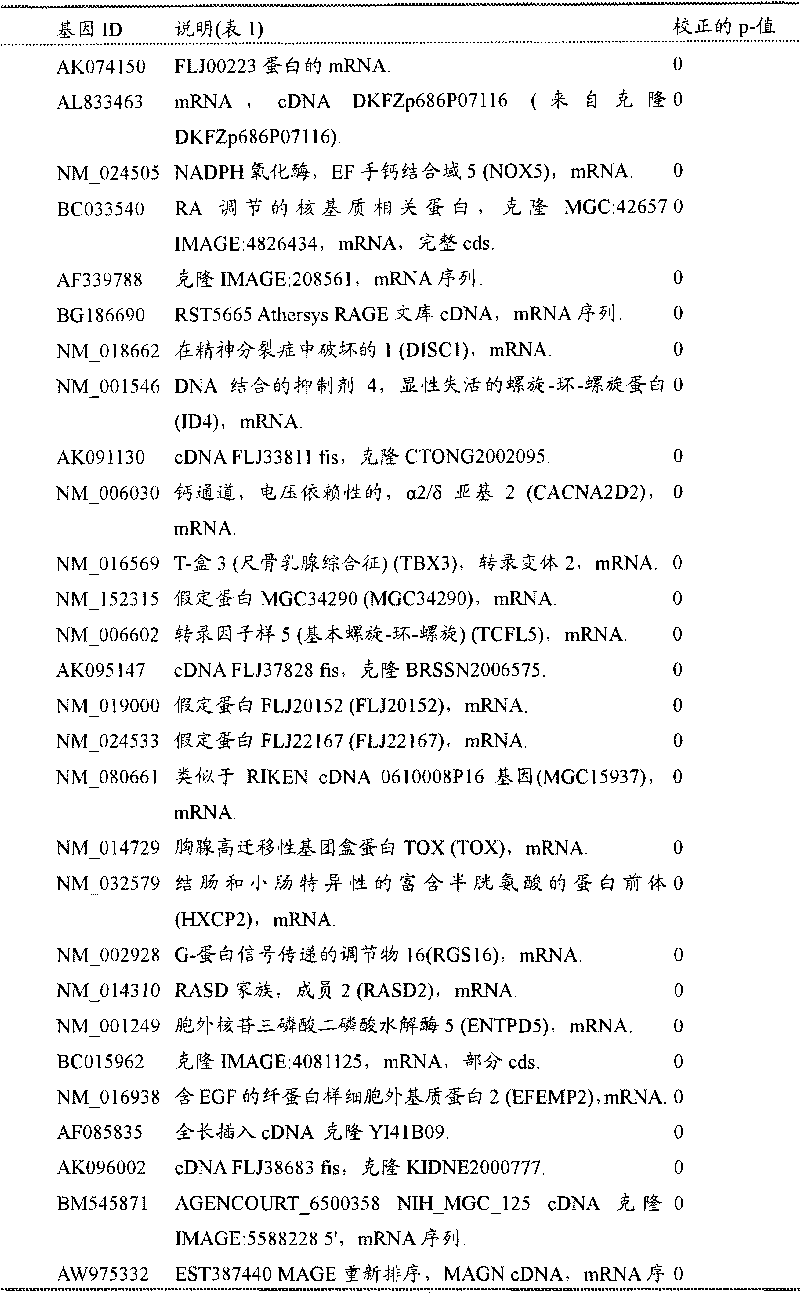Methods and tools for discriminating colorectal adenomas and adenocarcinomas
A technology for colorectal adenoma and rectal adenocarcinoma, which is applied in the field of tumor diagnosis and can solve problems such as microsatellite instability
- Summary
- Abstract
- Description
- Claims
- Application Information
AI Technical Summary
Problems solved by technology
Method used
Image
Examples
Embodiment 1
[0197] Example 1: Determination of differentially expressed genes in microarrays
[0198] Select a tumor sample
[0199] Seventy-three snap-frozen colorectal tumors (37 non-progressed adenomas and 36 carcinomas) were prospectively harvested at the VU-University Medical Center (VUmc) in Amsterdam, The Netherlands. All samples were used according to the regulations of the ethics committee.
[0200] The 73 frozen specimens corresponded to 65 patients (31 females and 34 males). Of these patients, 6 patients had multiple tumors: 4 patients had multiple adenomas and 2 patients had one or more adenomas adjacent to carcinoma. The mean age of the patients was 69 years (range, 47-89 years).
[0201] Array-CGH and expression microarrays were performed on cryo equipment.
[0202] RNA isolation
[0203] RNA was isolated from snap-frozen tissues using TRIzol reagent (Invitrogen, Breda, NL) according to the supplier's instructions. RNA and DNA concentration and purity were measured in ...
Embodiment 2
[0216] Example 2: Integration of expression data and CGH analysis
[0217] To investigate the effect of chromosomal instability on gene expression during colorectal adenoma progression to adenocarcinoma, a series of 114 colorectal tumors (37 non-progressed adenomas, 41 progressive adenomas (malignant polyps) and Genome-wide copy number alterations were analyzed by array-CGH on 36 cancers.
[0218] The determination of the SROs disclosed in the present invention is described in detail here for the chromosome gain region on 20q. For 41 progressive adenomas, the adenoma and adenocarcinoma components were analyzed for DNA copy number changes. Deletions of 1p, 4, 8p, 14q, 15q, 17p, and 18 and gains of 1q, 6p, 7, 8q, 13q, 17q, 19p, 20q, and 22q were observed in >20% of cases, with deletions of 8p and 18 And 13q and 20q gains are the most frequent, occurring in more than 35% of cases. Gain of a lone chromosome 20 occurs in more than 60% of cases. Genome-wide, in progressive adeno...
PUM
 Login to View More
Login to View More Abstract
Description
Claims
Application Information
 Login to View More
Login to View More - R&D
- Intellectual Property
- Life Sciences
- Materials
- Tech Scout
- Unparalleled Data Quality
- Higher Quality Content
- 60% Fewer Hallucinations
Browse by: Latest US Patents, China's latest patents, Technical Efficacy Thesaurus, Application Domain, Technology Topic, Popular Technical Reports.
© 2025 PatSnap. All rights reserved.Legal|Privacy policy|Modern Slavery Act Transparency Statement|Sitemap|About US| Contact US: help@patsnap.com



